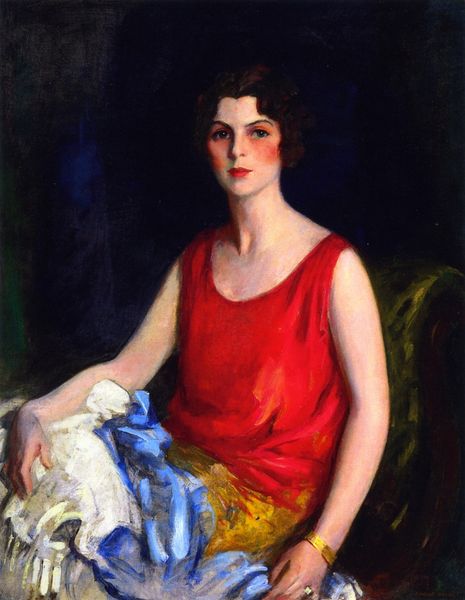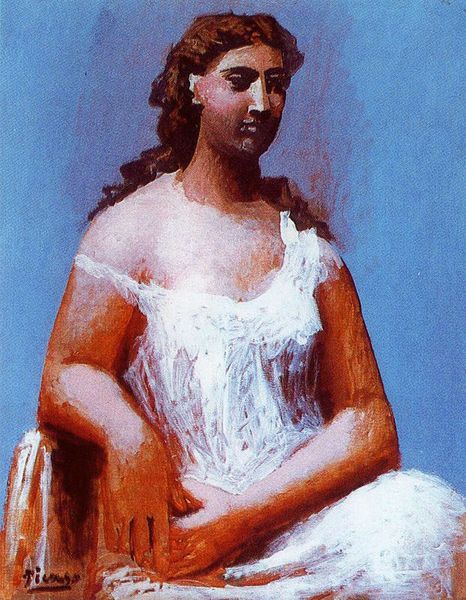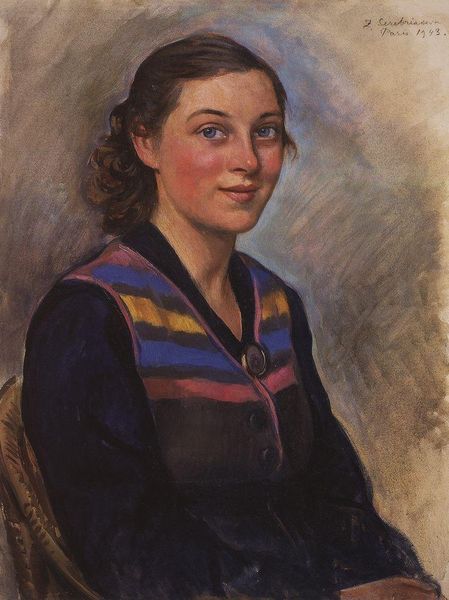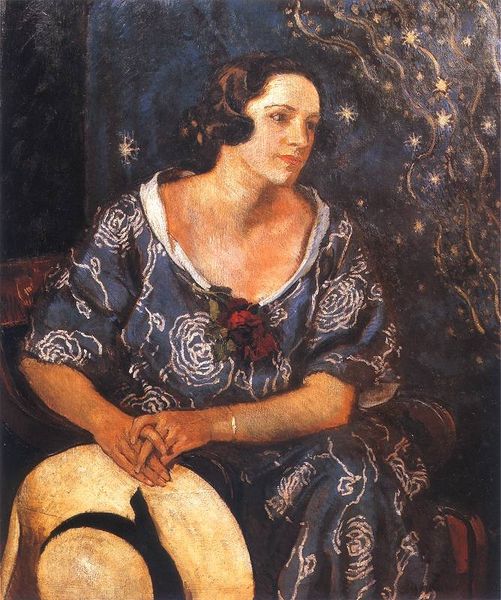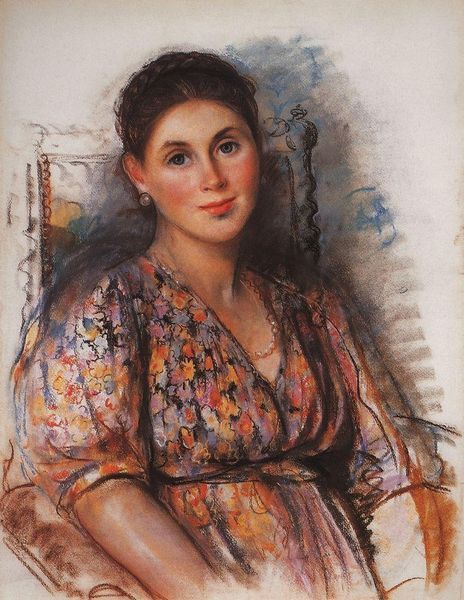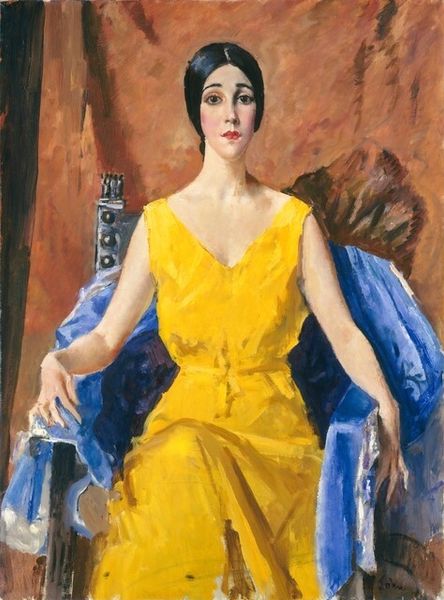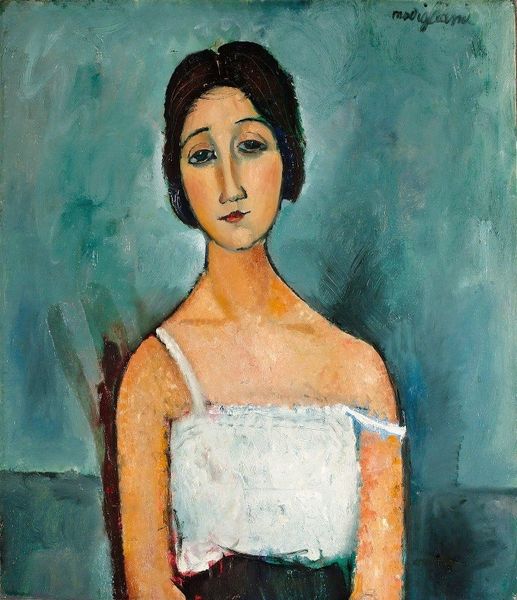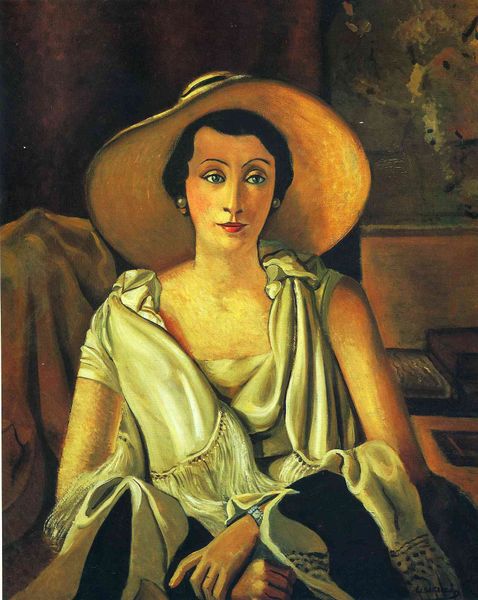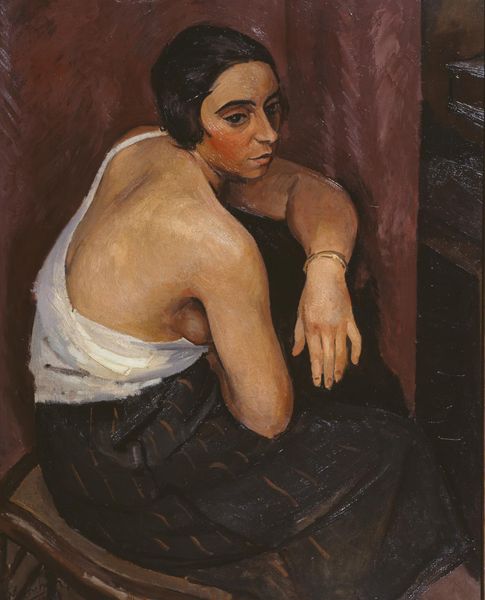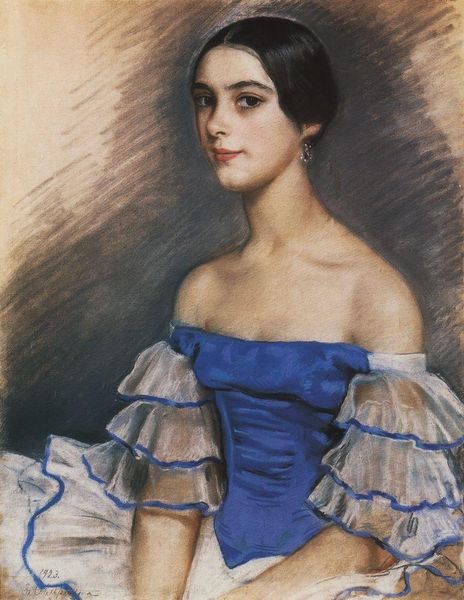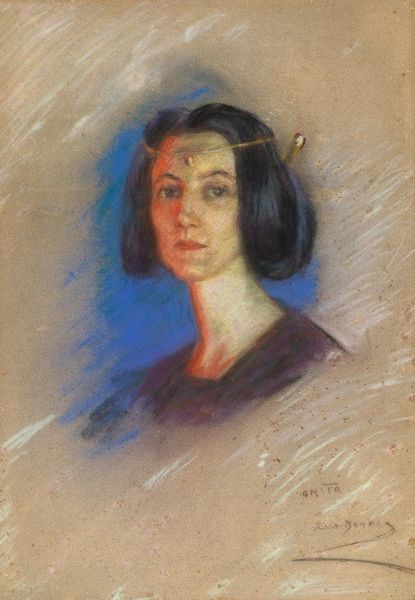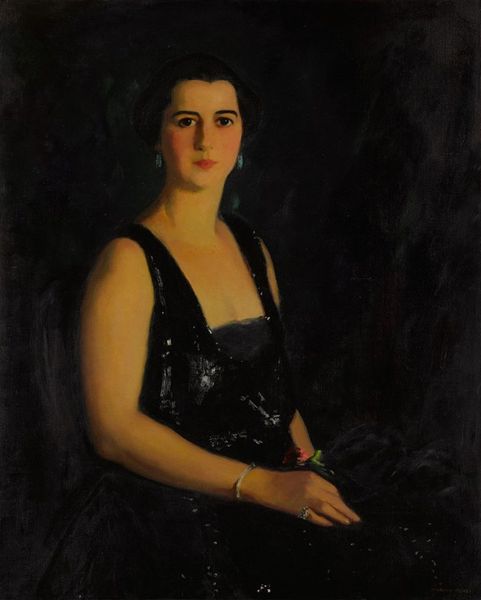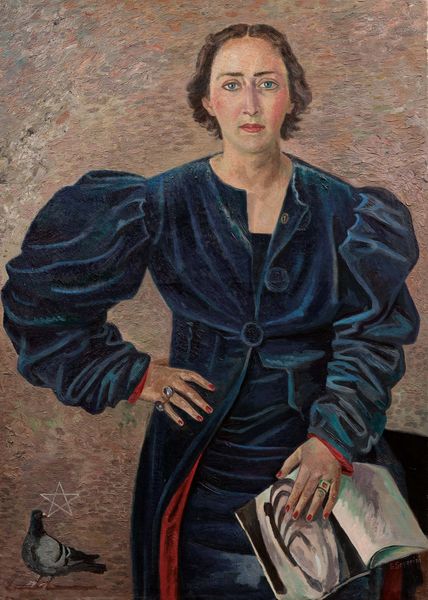
Copyright: Zinaida Serebriakova,Fair Use
Editor: This is Zinaida Serebriakova's 1934 painting "Elena Braslavskaya," rendered in oil. The woman's gaze and soft, muted tones create a sense of quiet dignity. What do you see in this portrait? Curator: Observe how the composition divides itself into distinct zones. We have the foregrounded figure, defined by her stark black and white dress. This is contrasted against the indistinct background, a hazy gray-blue plane that refuses to fully resolve. This creates a fascinating tension between presence and ambiguity. Editor: The texture of her dress seems particularly important. Curator: Indeed. The treatment of fabric here transcends mere representation. Consider the way the light plays across the satin, each brushstroke a deliberate act in constructing not just form, but also luminosity. Do you see how the folds in the fabric echo the subtle shadows on her face, linking the figure to the object? Editor: I hadn't noticed that connection before. It's like a visual echo. Does the interplay between light and shadow serve any additional structural purpose? Curator: The contrast of light and shadow certainly serves a structural purpose by enhancing the three-dimensionality of the figure, giving volume to the breasts, and bringing focus to the subject’s gaze. Consider also the significance of the relatively muted palette - does the color scheme invite any reflections on your part? Editor: The limited color palette keeps the focus on form and the subtle play of light, creating a very unified and contained composition. Curator: Precisely. This painting offers a fascinating exercise in purely visual language and shows us how an artwork, through close compositional attention, can provoke and beguile the eye, quite separate from historical narratives. Editor: It’s remarkable how much can be understood through formal elements alone. Thank you!
Comments
No comments
Be the first to comment and join the conversation on the ultimate creative platform.
